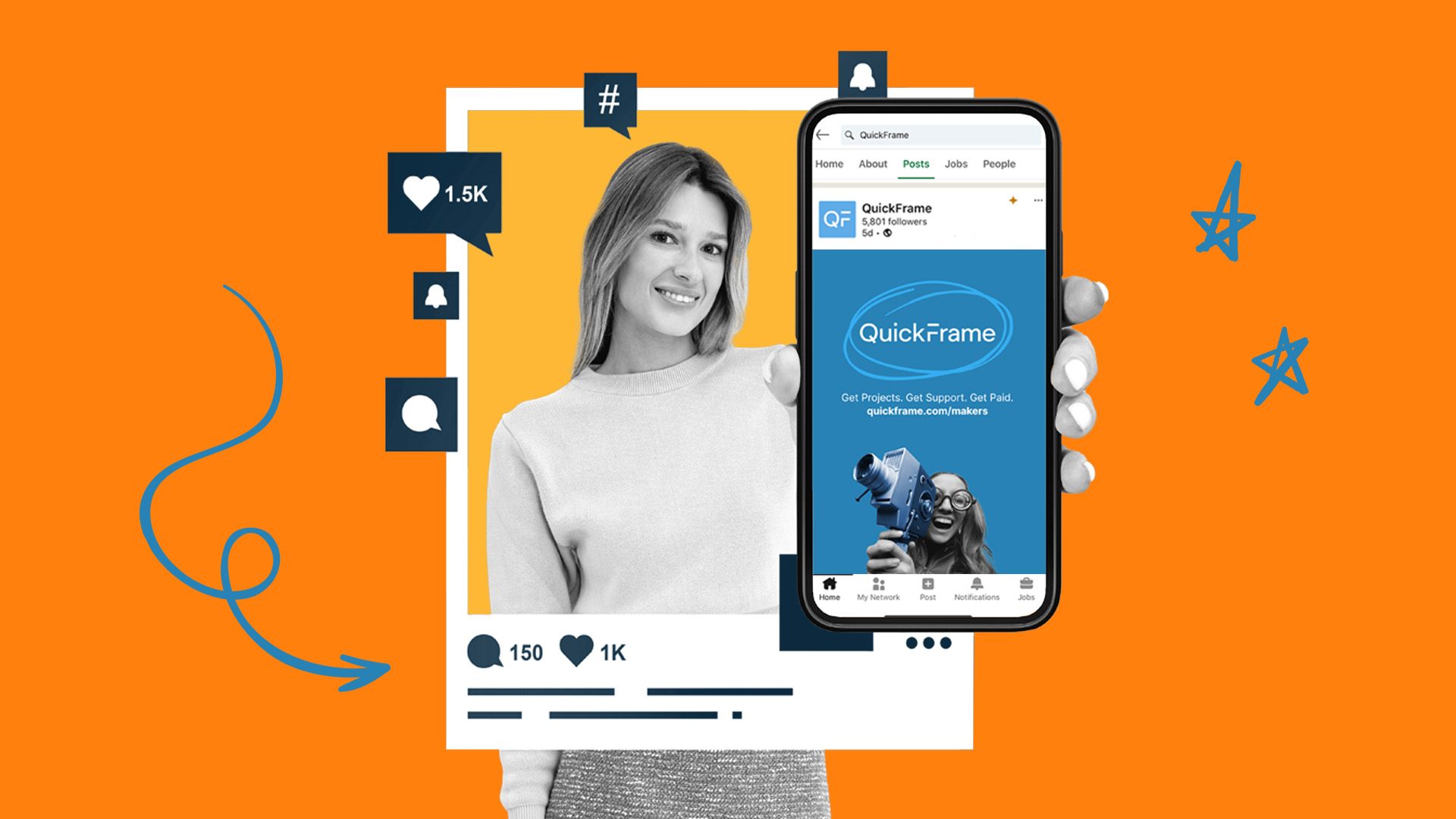What Platforms Are Right for Your Ads?

Let me guess. You’re here because someone told you you need to “diversify your channel mix.”
(Was that us? It may have been us.)
Here’s what we mean. Because of the saturated content landscape of modern-day internet culture, it can be difficult to pinpoint exactly where your audience is at. Are they doomscrolling through Twitter or boosting meme stocks on Reddit? Are they embarrassing their children by performing viral dances on TikTok, or are they those embarrassed children watching their parents perform a viral dance on TikTok?
Seriously, your audience is in more places than you may expect, which is exactly why you need to produce ads for the platforms and channels your core consumers love.
There’s a laundry list of social media platforms that are tailor made to run your ads, but it can be difficult to know exactly which platform you should produce ads for that will maximize your ROAS and hit those lofty KPIs you’ve set for the year.
In order to help you figure out exactly what channel (or channels, we should say) you should create ads for, we’ve put together a running list of the top performing platforms–from social media to CTV and OTT–that you should integrate into your channel mix.
Learn More: Social Media Video Ad Specs & Placements Guide
Social Media
Since its launch in 2004, Facebook has continued to grow every year and is the most used social media platform with 2.7 billion monthly active users. Out of all of the platforms, Facebook is used by the widest range of demographics, making it a great option to target most audiences with any objective.
Ad opportunities on Facebook:
- Facebook Feed
- Facebook 360 Video
- Facebook In-Stream Video
- Facebook Video Feeds
- Facebook Stories
- Facebook Instant Articles
Instagram has over 1 billion monthly active users, making it one of the most popular social media platforms for advertisers to reach a wide array of audiences.
MORE TIPS: Instagram Video Marketing: Your Ultimate Creative Guide
Ad opportunities on Instagram:
- Instagram Stories
- Instagram Feed
- Instagram Explore
- IGTV
Snapchat
Snapchat has almost 249 million daily active users worldwide who spend an average of over 30 minutes on the app every day. And Snap is growing. The platform saw a 20.5% YoY increase in 2020.
Snapchat users skew younger, so if you are targeting a millennial or Gen Z audience, you may see a great ROI on the platform. Among teens, Snapchat is the most popular social media network.
Several video content formats perform well on Snapchat including live-action, stop motion, cinemagraphs, gif-like videos, or motion stills. UGC-style ads, like the QuickFrame-created example from Self below, are popular because they’re native video ads that blend in with the app and tend to drive performance.
LEARN MORE: Snapchat Marketing: Your Ultimate Creative Guide
Ad opportunities on Snapchat
- Single Video
- Snapchat Story Ads
- Snapchat Commercials
- Snapchat Lenses (World and Face)
- Snapchat Filters
If you’re in the B2B space, LinkedIn ads are one of the best types of B2B marketing videos and can be a good way to reach prospects at all stages of the funnel. You can attach lead gen forms directly to your B2B video ads to acquire leads, or choose to convert on your website.
Ad opportunities on LinkedIn
- LinkedIn Sponsored Content
2020 was a catalyzing year for Pinterest. Throughout the pandemic, the eye-catching platform swelled to 442 million global monthly active users—a 37% increase year over year. Gen Z, Millennials, and men are driving this growth.
Pinterest has traditionally been a hub for static images, but video pins have recently risen in popularity.
Ad opportunities on Pinterest
- Video Pins and Ads
- Max. Width Video Ads
Twitter has seen a growth of 34% YoY in Monetizable Active Users—currently, there are 186 million monetizable daily active users on the platform worldwide. According to Twitter, it is the #1 platform for discovery and users spend 26% more time viewing ads on Twitter than on other leading platforms.
Ad opportunities on Twitter
- Promoted Ads
- Follower Ads
- Twitter Amplify
- Twitter Takeover
- Twitter Live
- Promoted GIF
- Promoted Video
- Amplify Pre-Roll
TikTok
TikTok surged in popularity in 2020, dominating the cultural zeitgeist during the COVID-19 pandemic. The music-forward platform is heavy on trends and is very popular with Millennials and Gen Z. TikTok has nearly 600 million daily active users worldwide.
TikTok is a creativity-driven, video-only platform, making it an attractive buy for advertisers looking to target younger demographics with unique video content ideas. Out-of-the-box creative using styles like stop motion can really pop on this platform.
LEARN MORE: TikTok Marketing: Your Ultimate Creative Guide
Ad opportunities on TikTok
- In-feed Video
- TopView
- Branded Takeover
YouTube
YouTube has 2 billion logged-in monthly users, 15% of which are from the U.S. Interestingly, 73% of U.S. adults use YouTube—more than Facebook or Instagram—making it the most popular online platform in America, according to Pew Research.
Out of all of the social media platforms, YouTube is the most hospitable to broadcast-quality creative, like the QuickFrame-created Nurx commercial below. More and more people (100 million US viewers a month in 2020) are watching YouTube content on TVs, so be sure that your content will work well on large screens. Ads created for Linear TV or CTV/OTT advertising platforms can easily be repurposed for YouTube.
PLAN YOUR STRATEGY: YouTube Marketing: Your Ultimate Creative Guide
Ad opportunities on YouTube
- Skippable Video Ads
- Non-Skippable Video Ads
- Bumper Ads
Reddit launched video advertising over a year ago. As a discovery and search hub with a wide array of users, Reddit may be the right platform for your brand to drive conversions with high-intent users.
There is only one main ad placement available: the Promoted Post. There are additional Takeover ad units available (where your brand can own a community or page for a period of time), but the specs for those units are identical to that of the Promoted Post.
Ad opportunities on Reddit:
- Promoted Video Post
CTV and OTT
Streaming television is at an all-time high. As we’ve developed a newfound familiarity with our living room couches, at-home content consumption has surged to new heights.
The opportunity for marketers is abundantly clear—and advertisers are moving fast. According to Advertiser Perceptions, 66% of advertisers plan to increase their streaming budgets in the coming years. With audiences and your competition flocking to the channel, the time to crystallize your CTV & OTT marketing strategy is now.
When it comes to advertising, there are four main types of OTT players you need to understand: Smart TVs (which are CTVs), OTT Devices, OTT Apps, and DSPs (demand-side platforms).
LEARN MORE: The A to Z of CTV & OTT
Connected TVs
This is any TV that can connect to the Internet. This is the most popular way that audiences stream OTT content, whether it be from an OTT device connected to a TV (e.g., Xbox, Amazon Fire Stick) or an OTT app (e.g., Netflix or Hulu) on a Smart TV (e.g., YouTube TV, Roku). Video inventory includes OTT app inventory (in exchange for being featured in the Smart TV’s interface, the hardware manufacturer sells a portion of the app’s inventory) and some home screen banners (many of which are static). Some also own free streaming services (e.g., Watch Free or Samsung TV Plus) that have ad inventory and sponsorship opportunities.
CTVs offer robust audience targeting, and they also offer the ability to target certain genres/categories. While you won’t get instant/digital ad engagement data, you can get app engagement data (e.g., clicks on apps and time spent in-app). For your ads, you’ll primarily get a lot of what I like to call “eyeball data”—this is like impressions, but it’s likely that several people in a household are watching TV together. There’s no real-time conversion data available, though some attribution measurement is available via third-party vendors.
OTT Devices
Streaming devices that connect to a TV, including Roku, Amazon Fire TV Stick, Apple TV, Xbox, and PS4. The general video inventory available with OTT Devices is similar to that of Smart TVs: OTT app inventory and home screen banners. They too have free channels (e.g., Roku Channel) that they sell ad inventory on. Additionally, OTT devices sometimes offer sponsorship of certain categories or shows.
Like with CTVs, you’ll be able to take advantage of robust audience targeting using audience data collected by OTT devices, and you can get a lot of eyeball data and app engagement data, too. Additionally, some devices offer real-time conversion data (e.g, Amazon can track sales).
OTT Apps
These are streaming apps that are housed on Smart TVs or OTT Devices. Some common OTT apps include Netflix (though there’s no ad space), CNNgo, and Hulu, and many do include ad space. Some also offer sponsorship of certain categories or shows.
The primary advantages of OTT apps are their ability to target audiences based on viewing habits and first party audience data, and also the ability for you to place ads in certain genres/categories. Some OTT apps allow for deeper content curation and even give you the ability to target audiences at the show-level. As far as performance data, you’ll mostly rely on those eyeball figures. No real-time conversion data is available via OTT apps, though you can pursue some attribution measurement with third-party vendors.
DSPs
Some DSPs—such as Xandr, Amazon, or DataXu (now owned by Roku), for example—have OTT apps and CTV ad space as sources of inventory that can be purchased. If available, you can leverage DSPs to deploy programmatic ads on OTT apps and devices.
THE ONE MARKETING SOLUTION YOU NEED FOR A PRIVACY-FRIENDLY FUTURE: Learn what Creative Analytics is, and why it’s the next frontier of data-driven marketing.
Do More with Video
Learn how we can help you produce more quality videos affordably and at scale.


